Horizontal Cable Lifelines Are Versatile and Cost Effective
A Horizontal Cable Lifeline Is Frequently Used For Rooftop Fall Protection
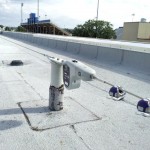 Horizontal cable lifelines are a versatile type of fall protection that is cost effective and can be used in many different locations, situations and industries. Lengths can be as short as a few feet, up to hundreds of feet, and the flexible wire rope used allows the fall arrest system to be bent around corners, up and down the pitch of a roof or around equipment. They are frequently used on crane runways, rooftops, dams and other areas with adequate fall clearance.
Horizontal cable lifelines are a versatile type of fall protection that is cost effective and can be used in many different locations, situations and industries. Lengths can be as short as a few feet, up to hundreds of feet, and the flexible wire rope used allows the fall arrest system to be bent around corners, up and down the pitch of a roof or around equipment. They are frequently used on crane runways, rooftops, dams and other areas with adequate fall clearance.
In these systems, a wire rope, generally containing an energy-absorbing shock absorber, is tensioned between two or more anchor posts. The line is equipped with pass-through brackets and shuttles, allowing the worker to traverse the system without having to disconnect and reconnect, allowing for 100% tie-off at all times. In the event of a fall, the combination of the in-line shock absorber, stretch of the cable, and lanyard or SRL protect the worker by slowing the speed of the stop, thereby minimizing the arresting forces on the body.
Cable Lifelines Are Not Suitable For All Applications
FallProof offers industry-specific, full-turnkey solutions that meet and/or exceed OSHA and ANSI standards. Our team provides design, engineering, fabrication, installation, certification and employee training to meet the needs of your elevated work environments. Although cable lifelines are less expensive and more widely used, they have the disadvantage of requiring a greater fall clearance when compared to a fixed or rigid track system. Accordingly, they are not suitable for all applications.
Click to Call
or dial us at 1-(855) 279-2000
Call us today to discuss your specific location. We offer a free on-site assessment, and our experts can help you determine what is best for your needs. You also may contact us by email (feel free to upload drawings or other materials that will help us). All inquiries are held in strict confidence. Below are a few horizontal cable lifeline installations FallProof has completed for various clients.
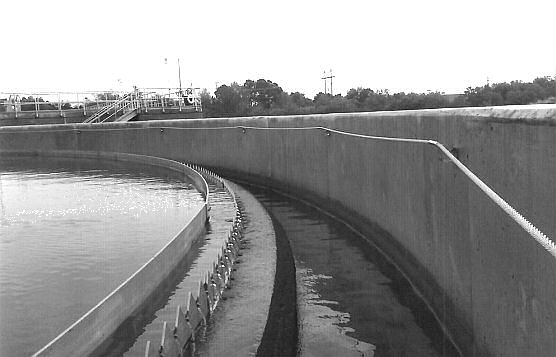
Ocean City Wastewater Treatment Plant, Ocean City, Maryland (370’ Safe Glide by DBI/Sala, rated for two users) - In this application, we used approximately 6” of Chemical Anchoring around a new water treatment concrete tank. The project was done during the summer, and was challenging due to the massive amount of water coming into the tank daily. The plant had to lower the water level to create a safe walkway around the edge of the tank.
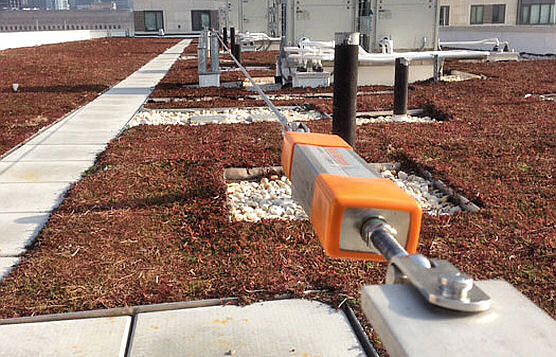
Drexel University, Philadelphia, PA (13 Lifelines on three level roofs ranging from 40’ to 220’ lines) - This application allows contractors to be tied off before working on a gutter or HVAC main. The project was planned well in advance due to the need to weld the custom posts to the massive roof beams in specific locations.
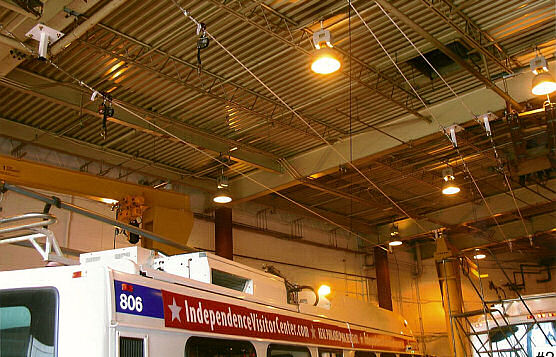
Southeastern Pennsylvania Transportation Authority (SEPTA) Bus Transportation Garage, Philadelphia, PA – This application was a massive installation – approximately 600’ in total length providing protection in all 14 bus bays. FallProof had to install and complete one bay at a time, each of which took approximately three weeks to accomplish. Each bay now contains two lifelines, each rated for two users. Non-conductive cable was used.
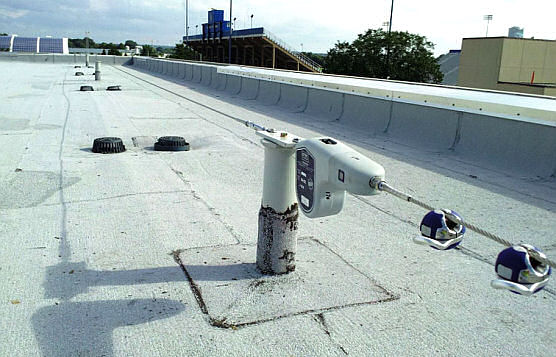
University of Delaware, New Atlantic Building, Newark, DE (9 Lines on two roof levels) - Here the challenge was installing a non-penetration system, per the architect's request. FallProof designed a large, unique base plate to accept 24 to 36 fasteners to the roof metal decking. Each base plate was approximately 80 lbs.
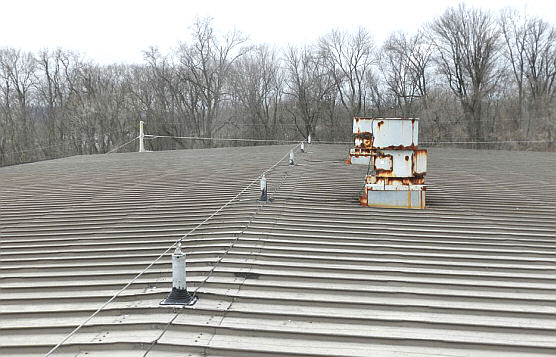
Covanta Energy, Bainbridge, PA - FallProof installed fall arrest protection on a residue building in the form of a horizontal cable lifeline for workers who would need access to the roof. This included stainless steel components for harsh environments.
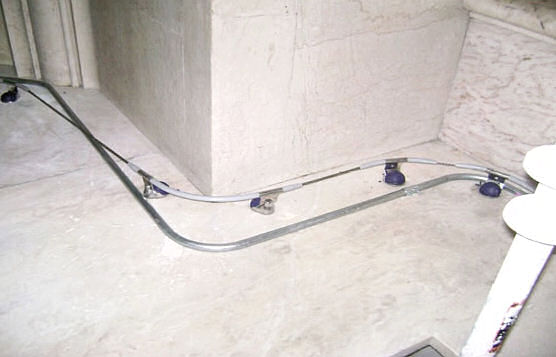
The Franklin Institute, Philadelphia, PA - FallProof installed a DBI/SALA Evolution horizontal lifeline on the 4th story of the Franklin Institute. It needed to be installed around the 4th floor balcony edge, requiring 50 separate anchor points drilled into imported marble and 50 inside/outside curves installed around the perimeter. The installation also needed to be coordinated with the multiple contractors who were performing on-going restoration work on the building. FallProof successfully completed the project on budget and ahead of schedule.
 Horizontal cable lifelines are a versatile type of fall protection that is cost effective and can be used in many different locations, situations and industries. Lengths can be as short as a few feet, up to hundreds of feet, and the flexible wire rope used allows the fall arrest system to be bent around corners, up and down the pitch of a roof or around equipment. They are frequently used on crane runways, rooftops, dams and other areas with adequate fall clearance.
Horizontal cable lifelines are a versatile type of fall protection that is cost effective and can be used in many different locations, situations and industries. Lengths can be as short as a few feet, up to hundreds of feet, and the flexible wire rope used allows the fall arrest system to be bent around corners, up and down the pitch of a roof or around equipment. They are frequently used on crane runways, rooftops, dams and other areas with adequate fall clearance.






